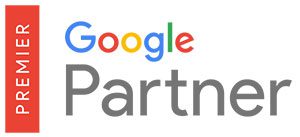In the ever-evolving digital landscape, bots have become commonplace. Among these, one that has been making waves due to its advanced capabilities is the GPT (Generative Pretrained Transformer) bot. These AI-powered bots are designed to generate human-like text based on their input. They can be used for a myriad of applications, from drafting emails and writing articles to creating engaging dialogues for video games and customer service interfaces.
However, despite their usefulness, there may be times when you don’t want these bots crawling your website. Bots, including GPT bots, crawl websites to gather information. While this is a normal part of internet operations, it’s essential to control how and when they do so. Unregulated bot activity can lead to several issues, such as slowing down your website, skewing analytics data, and even exposing security vulnerabilities.
Controlling bot access to your website is not about completely blocking them out, but rather managing their access to ensure your site’s performance is not compromised and your data remains secure. In this post, we look further into the world of GPT bots, why you might want to block them, and how you can effectively do so. This guide aims to provide you with the knowledge and tools to maintain the optimal balance between bot activity and your website’s performance and security.
Understanding GPT Bots
GPT bots, also known as Generative Pretrained Transformer bots, are a type of artificial intelligence (AI) that specialises in generating human-like text based on the input they receive. They utilise machine learning algorithms to understand and replicate human language patterns, with the ultimate goal of producing content that is indistinguishable from that written by a human.
GPT bots are powered by a model trained on a diverse range of internet text. But unlike most traditional AI models, which are trained to perform a specific task, GPT bots are not. Instead, they use unsupervised learning to write original content, answer questions, translate text, and even write poetry.
These bots work by predicting the next word in a sentence. They consider all the words that came before it, rather than just the few that immediately precede it. This allows them to generate more contextually relevant and coherent text.
When to Block GPT Bots
While GPT bots can be incredibly useful, there may be situations when you might want to block these bots from crawling your site. Here are a few examples:
- Website Performance: If left unregulated, bot activity can consume a significant amount of server resources, potentially slowing down your website or even causing it to crash. This can lead to a poor user experience for your visitors.
- Data Security: Bots can be used to scrape content from your website. While this is a normal part of how the internet operates, it can sometimes lead to security vulnerabilities if sensitive data is exposed.
- Analytics Accuracy: Bot traffic can skew your website analytics, making it difficult to understand your human users’ behaviour accurately.
- Content Originality: If you create unique content, you might not want bots to crawl and replicate it elsewhere.
By controlling bot access to your website, you can maintain its performance, keep your data secure, ensure the accuracy of your analytics, and protect your original content.
The Impact of Uncontrolled Bots on Your Website
While bots can benefit your website, uncontrolled bot traffic can have several negative impacts. Let’s explore some of how unchecked bot activity can affect your website performance and user experience:
Website Performance
Bots, by their very nature, are designed to crawl websites swiftly and efficiently. However, when too many bots are accessing your site simultaneously, they can consume a significant amount of server resources. This can lead to slower page load times, causing a decline in your website’s performance. In extreme cases, it can even result in server crashes, making your website inaccessible to your human visitors.
User Experience
Poor website performance directly influences the user experience. Slow load times can frustrate users, leading to higher bounce rates and lower session durations. This can potentially harm your site’s conversion rates and overall success. Moreover, if bots are skewing your analytics, it can become difficult to understand your users’ behavior and needs, thereby hindering your ability to optimize the user experience.
Security Risks
Allowing all bots free access to your website presents potential security risks. Some bots are designed to scrape content from your site, which could include sensitive information. If this data falls into the wrong hands, it could lead to serious security breaches.
Moreover, specific malicious bots can exploit vulnerabilities in your website’s code or structure. They can perform activities like spamming your forms, attempting brute-force login attacks, or injecting harmful code.
Therefore, while bots can be useful tools when managed correctly, it’s essential to control their access to your website. By doing so, you can maintain your site’s performance, enhance user experience, and safeguard your site against potential security threats.
How to Identify GPT Bots
Identifying GPT bots amidst your website’s traffic can be a challenging task, given their advanced capabilities and human-like interactions. However, there are sure signs and tools you can use to detect their presence:
Unusual Traffic Patterns
One of the most apparent signs of bot activity is an unexpected surge in traffic. If you notice a sudden increase in visits to specific pages or sections of your website, especially at odd hours, it might indicate bot activity. This is because bots can crawl many pages quickly and at any time, unlike human users, who typically browse websites at a much slower pace and during certain times of the day.
High Bounce Rates and Short Session Durations
Bots typically access a page and leave immediately after gathering the required information. This behaviour leads to high bounce rates and short session durations, which can signify bot activity.
Identical User Agents
Bots often use identical user agents when they crawl your website. If you see many requests coming from the same user agent, it could be a sign of a bot.
Tools for Monitoring Bot Traffic
There are several tools available that can help you monitor and manage bot traffic on your website. Here are a few examples:
- Google Analytics: Google Analytics lets you view detailed reports about your website’s traffic, including bot traffic. You can filter traffic by network domain or service provider to identify potential bot activity.
- Bot Management Solutions: There are specialised tools like Cloudflare, Imperva, or Akamai that offer comprehensive bot management solutions. These tools can help identify, categorise, and manage bot traffic on your site.
- Server Logs: Your server logs can provide valuable information about the requests made to your site. By analysing these logs, you can identify patterns that suggest bot activity.
By identifying GPT bots and using the right tools to monitor your website’s traffic, you can effectively manage bot activity on your site and ensure they don’t negatively impact its performance or security.
Methods to Block GPT Bots
There are several effective methods to block GPT bots from accessing your website. This includes using a robots.txt file, .htaccess file, or utilizing cPanel or hosting provider settings. Let’s delve into each method:
Blocking GPT Bots Using Robots.txt File
The robots.txt file is a simple text file placed on your website that tells web robots which pages on your site to crawl. To block GPT bots, you can add the following lines to your robots.txt file:
User-agent: GPTBot
Disallow: /
This directive tells any bot that identifies itself as GPTBot to not crawl any part of your site.
Pros:
- Simple and straightforward to implement.
- It allows for selective blocking of specific bots while allowing others.
Cons:
- Not all bots respect the directives in a robots.txt file. Malicious bots may ignore it and continue crawling your site.
Blocking GPT Bots Using .htaccess File
The .htaccess file is a configuration file used by Apache-based servers. You can use this file to block specific bots by adding the following lines:
<IfModule mod_setenvif.c>
SetEnvIfNoCase User-Agent “^GPTBot” bad_bot
</IfModule>
<Limit GET POST HEAD>
Order Allow,Deny
Allow from all
Deny from env=bad_bot
</Limit>
This code checks the user agent of incoming requests and blocks any that match “GPTBot”.
Pros:
- Effective at blocking specific bots even if they don’t respect robots.txt rules.
Cons:
- Only works on Apache servers.
- Could potentially block legitimate traffic if not configured correctly.
Using cPanel or Hosting Provider Settings to Limit Bot Access
Many hosting providers offer options within their control panels to limit bot access to your website. These options vary by provider, so you’ll need to check your particular host’s documentation or support for specifics.
Pros:
- Easy to implement if the option is available.
- Can be done without editing any files on your server.
Cons:
- Not all hosting providers offer this functionality.
- May not provide as granular control over which bots are blocked compared to the other methods.
By understanding these methods, you can choose the one that best fits your needs and technical ability to keep your website secure and performing optimally.
Verifying That GPT Bots Are Blocked
After blocking GPT bots, it is crucial to verify that the blocking has been successful. Here are some ways to check and confirm that GPT bots no longer have access to your website:
Analysing Web Traffic Data
Monitoring your web traffic data is one of the primary ways to confirm if GPT bots are blocked. Tools like Google Analytics can provide insights into user behaviour, including bot activity. Post-blocking, you should see a decrease in the unusual traffic patterns previously attributed to GPT bots.
Checking Server Logs
Server logs record all requests to your site, making them an invaluable resource for verifying bot blocking. By regularly reviewing your server logs, you can check if any requests are coming from the blocked GPT bots.
Using Online Bot Tracking Tools
Several online tools allow you to track and monitor bot activity on your website. Tools such as Botometer, Bot Sentinel, and others can help identify bot activity and confirm if the blocking measures have been successful.
Testing with a Bot Simulator
A bot simulator mimics the behaviour of a bot. By setting the user-agent of the bot simulator to the same user-agent of the GPT bot you’ve blocked, you can test whether your website is accessible to it or not. If the blocking is successful, the bot simulator should not be able to access your website.
Monitor Your Website’s Performance
If GPT bots significantly affected your website’s performance, you should notice an improvement after they’ve been blocked. This could manifest as faster loading times, lower server load, and improved overall performance.
Remember, while these methods can provide indications of successful blocking, bots are continually evolving, and some may find ways around your blocking efforts. Therefore, it’s essential to regularly review and update your bot management strategies to ensure they remain effective.
Considerations When Blocking Bots
While blocking bots can help protect your website from malicious activities, it’s crucial to consider the potential impacts and alternatives. Here are some key considerations when deciding to block bots:
Impact on SEO and Website Visibility
Search engine bots, such as Googlebot, play a vital role in indexing your website for search engines. If these beneficial bots are inadvertently blocked, it could negatively impact your website’s visibility in search engine results. Therefore, it’s essential to distinguish between good bots and bad bots before implementing any blocking measures.
Rate Limiting as an Alternative
Instead of outright blocking, rate limiting is another effective strategy to manage bot traffic. Rate limiting involves limiting the number of requests a user or IP address can make within a specific time frame. This approach can help prevent server overload and maintain website performance without completely blocking access.
False Positives
When blocking bots, there’s always a risk of false positives – legitimate users being mistaken for bots and blocked. This can lead to a decrease in website traffic and potentially lost business opportunities. Tools with advanced bot detection capabilities can help mitigate this risk by more accurately distinguishing between bots and human users.
Continuous Monitoring and Updating
Bots continuously evolve, with new ones appearing and existing ones changing their behaviour to evade detection. As such, any bot management strategy should include regular monitoring and updating to remain effective.
Choosing a Bot Management Solution
Numerous bot management solutions are available, each with strengths and weaknesses. When choosing a solution, consider factors like ease of use, effectiveness at identifying and blocking different types of bots, and the potential impact on your website’s performance and user experience.
Remember, while blocking bots can enhance your website’s security, balancing this with maintaining website functionality and visibility is crucial.
Conclusion
Controlling bot traffic is crucial for maintaining your website’s security, performance, and functionality. With the rise of AI-powered bots like GPT bots, taking proactive steps to manage bot activity is more important than ever.
We’ve explored various methods to block GPT bots, including using a robots.txt file, .htaccess file, and cPanel or hosting provider settings. Each method has pros and cons, and the best one for your website depends on your specific needs and technical abilities.
It’s also essential to verify that the blocking measures have been successful. This can be done by analysing web traffic data, checking server logs, using online bot tracking tools, testing with a bot simulator, and monitoring your website’s performance.
However, blocking bots should not be done without careful consideration. It’s crucial to distinguish between good and bad bots, as blocking beneficial bots can negatively impact your website’s visibility in search engine results. Alternatives to blocking, such as rate limiting, can also be effective at managing bot traffic without completely blocking access.
Moreover, remember that bot management is not a one-time task. Bots are continuously evolving, and your bot management strategies should evolve accordingly. Regularly monitor your website’s bot traffic and update your blocking measures to ensure optimal performance and security.
While bots can pose challenges, with the right strategies and tools, you can effectively control bot traffic and keep your website running smoothly. So, stay vigilant, keep learning, and empower your website with the best defence against unwanted bot activity.
FAQs
Q: What are GPT bots?
A: GPT bots, or Generative Pretrained Transformer bots, are AI-powered bots that use machine learning to generate human-like text based on the input they receive. They can be used for various tasks, such as writing articles, answering questions, and generating code.
Q: Why would I want to block GPT bots from my website?
A: While GPT bots can be beneficial in some contexts, they can also pose security risks. For example, they could scrape your website’s content, overload your server with requests, or engage in spamming activities. Blocking GPT bots can help protect your website from these potential threats.
Q: How can I block GPT bots?
A: There are several methods to block GPT bots, including using a robots.txt file, .htaccess file, or cPanel/hosting provider settings. You can also use bot management solutions that offer advanced features such as rate limiting, user-agent blocking, and IP blocking.
Q: How do I know if the blocking was successful?
A: You can verify the success of your blocking measures by analysing web traffic data, checking server logs, using online bot tracking tools, testing with a bot simulator, and monitoring your website’s performance. If the blocking was successful, you should see a decrease in unusual traffic patterns and an improvement in website performance.
Q: Can blocking bots impact my SEO?
A: Yes, blocking bots can impact your SEO if beneficial search engine bots are inadvertently blocked. These bots are responsible for indexing your website for search engines, so blocking them could reduce your website’s visibility in search engine results. It’s important to distinguish between good and bad before implementing any blocking measures.
Q: Are there alternatives to blocking bots?
A: Yes, rate limiting is one alternative to blocking bots. Rate limiting involves limiting the number of requests a user or IP address can make within a specific time frame. This can prevent server overload and maintain website performance without completely blocking access.
Footnotes
- The Decoder. “Here is how to block OpenAI from using your web content for ChatGPT.” https://the-decoder.com/here-is-how-to-block-openai-from-using-your-web-content-for-chatgpt/
- Ars Technica. “Sites scramble to block ChatGPT web crawler after OpenAI details how to keep it from gobbling up website data.” https://arstechnica.com/information-technology/2023/08/openai-details-how-to-keep-chatgpt-from-gobbling-up-website-data/
- Plagiarism Today. “How to Block ChatGPT (And Why to Do It).” https://www.plagiarismtoday.com/2023/08/10/how-to-block-chatgpt-and-why-to-do-it/
- Search Engine Journal. “How to Block OpenAI ChatGPT From Using Your Website Content.” https://www.searchenginejournal.com/how-to-block-chatgpt-from-using-your-website-content/478384/
- The Verge. “Now you can block OpenAI’s web crawler.” https://www.theverge.com/2023/8/7/23823046/openai-data-scrape-block-ai
- Pluralsight. “How to block OpenAI from crawling your website.” https://www.pluralsight.com/resources/blog/data/blocking-ChatGPT-OpenAI-website-crawling
- SERoundtable. “ChatGPT Bot – You Can Block OpenAI Plugins If You Want.” https://www.seroundtable.com/chatgpt-bot-user-agent-35131.html
- Bigscal. “Effective Techniques to Block ChatGPT’s Access.” https://www.bigscal.com/blogs/ai-ml-blockchain/effective-techniques-to-block-chatgpts-access/
- Mashable. “OpenAI launches webcrawler GPTBot, and instructions on how to prevent it from using your website’s content.” https://mashable.com/article/open-ai-gptbot-crawler-block/
- Neil Patel. “How to Block Bots From Coming to Your Website: Tools & Strategies.” https://neilpatel.com/blog/block-bots/
- Search Engine Journal. “How & Why To Prevent Bots From Crawling Your Site.” https://www.searchenginejournal.com/prevent-bot-crawling/450430/
- Radware. “Key Considerations In Bot Management Evaluation.” https://www.radware.com/blog/security/2019/05/key-considerations-in-bot-management-evaluation/
- Indusface. “Blocking Bots: Why We Need Advanced WAF?” https://www.indusface.com/blog/blocking-bots-why-we-need-advanced-waf/
- CloudPanel. “How to Prevent Bad Bots Attack for Secure Websites?” https://www.cloudpanel.io/blog/bad-bots/
- Akamai. “Top 10 Considerations for Bot Management.” https://www.akamai.com/site/en/documents/ebook/top-10-considerations-for-bot-management-ebook.pdf
- Indusface. “How to choose a Bot Prevention Vendor?” https://www.indusface.com/blog/top-10-considerations-when-looking-for-a-bot-prevention-vendor/
- Netacea. “How To Block Bot Traffic? | Malicious Bots Mitigation Methods.” https://netacea.com/glossary/block-bot-traffic/
- Cloudflare Community. “How do I block bad bots and allow good ones?” https://community.cloudflare.com/t/how-do-i-block-bad-bots-and-allow-good-ones/487056







